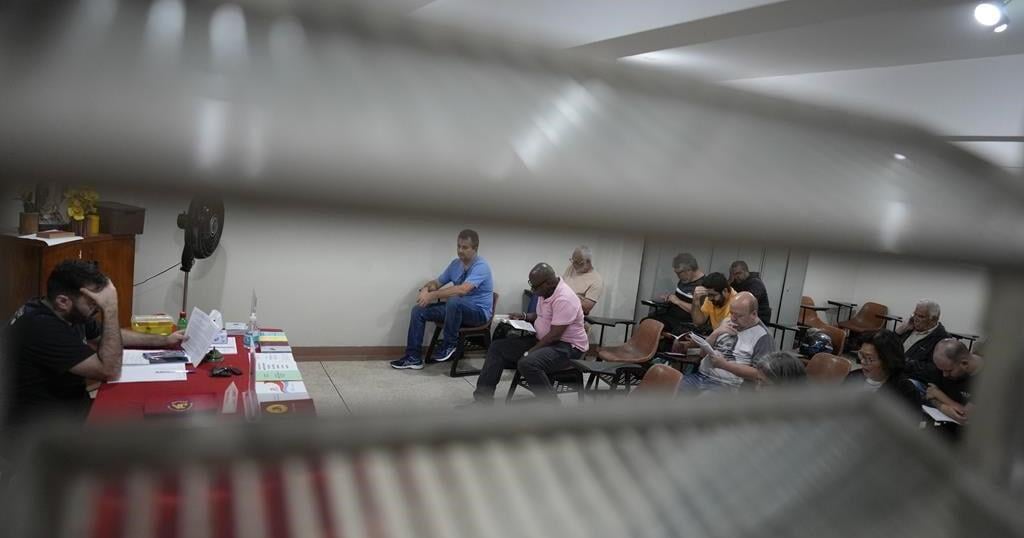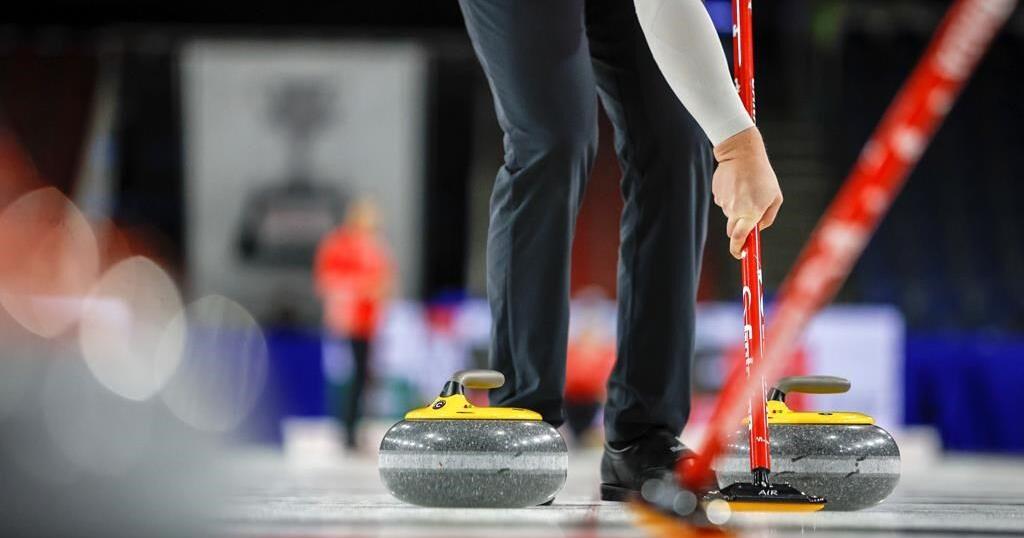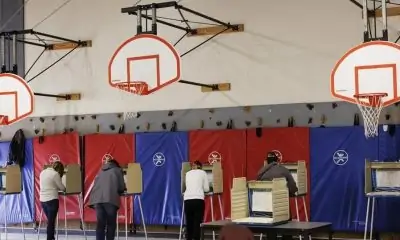Paris (AP) — Like many other athletes, Justin Phongsavanh has a take on the chocolate muffins at the Paralympic Village.
“It doesn’t get much better than that,” said Phongsavanh, a U.S. Paralympian and bronze medalist in the seated javelin throw. However, Phongsavanh and other Paralympians can’t live on muffins alone. They and their dietary teams face complex challenges, but scientists and athletic personnel are workshopping their own solutions even as research lags behind.
The biggest challenge of para nutrition strategy is that athletes’ needs vary tremendously based not only on their sport, but on their disabilities and other underlying conditions, said applied sports nutrition scientist Joëlle Leonie Flück.
“Disability types are so different in terms of needs and requirements from a nutritional perspective, but also from a medical perspective,” said Flück, who also serves as president of the Swiss Sports Nutrition Society. “There are a lot of things to consider, like energy expenditure, which can be totally different from individual to individual, or from disability to disability.”
For example, a wheelchair basketball player with full mobility of the arms, Flück said, might require vastly different fueling strategies than a quadriplegic wheelchair rugby player.
Specific needs
All athletes have specific nutritional needs, but para athletes’ disabilities and underlying conditions complicate strategy. Gastrointestinal issues are particularly common among para athletes because of fiber deficiencies, high sodium levels and even sensitivity to spices.
At the Team USA High Performance Center, in Eaubonne, just north of Paris, nutrition director Brian Knutson and dietitian Hilary Kave said many meals are taken “straight from Colorado Springs,” the location of the U.S. Olympic & Paralympic Committee’s training center and home to many Paralympic athletes. Supplements and American snacks are shipped, while fresh ingredients are bought in-country.
“We know that there are certain athletes that like things done a certain way,” said Knutson. “For us, that gives us just a small edge. That piece of familiarity, home and comfort, it just makes their life easier.”
Para triathlete Allysa Seely said she and her teammates eat most of their meals at the HPC in Eaubonne, exactly for that reason.
“We know the chefs, we know the food, the recipes, the menu, we know all of that,” said Seely, who earned a bronze medal in the women’s PTS2 classification, which is for athletes with coordination challenges. “It’s something we’re comfortable and confident in.”
But gastrointestinal problems are only one dimension of para athletic nutrition strategy. Andrew Shepherd provides workshops, consultations and other services to athletes and para athletes at Loughborough University in the United Kingdom.
Shepherd said para athletes sometimes face particular problems staying hydrated. For example, those with spinal cord injuries may struggle to regulate body temperature. Shepherd said nutrition staff implement more cooling strategies for Paralympians than they do for Olympians, including an increase in “ice vests, ice packs, cold slushies.”
Bringing accessibility to the dining hall
Accessibility is not just a conversation about elevators and ramps. Certain methods of food delivery can present problems for para athletes. Self-service buffets often put food out of reach for wheelchair users and people of short stature.
Shepherd said small changes, like providing boxes and bowls that are slanted forward, can make all the difference.
“It’s simple things, but it’s consistently spotting them and doing them, making sure that we’re making it equitable rather than having it be equal,” Shepherd said. “It’s really, really important for them to be able to be full users of that space.”
At the USOPC center, Kave said the nutrition team accommodates many different disabilities. Self-service food is placed at a lower height so everyone can reach it. Registered dietitians can make plates for athletes with visual impairment.
Delivery isn’t always a matter of physical space. Neurodivergent athletes can be sensitive to textures and food mixing, so Shepherd said the team at Loughborough accommodates those concerns as well.
Learning lacking
Kave, Shepherd and others say that their work helping Paralympians get the most out of their meals takes place in the context of a bigger social issue: Most people, with or without disabilities, don’t know enough about healthy diets.
That means the key challenge for dietitians working with para athletes is not only familiarizing themselves with each athlete and their individual needs, but also teaching athletes to approach nutrition as a life skill.
“The more you absorb, the better it will be for when you’re off and kind of on your own,” said Kave. “At that point when you stop becoming that athlete, maybe you’re not in the competitive field anymore, I want you to have that knowledge so that you can continue on.”
Para triathlete Seely said that her current dietary team is relatively new, but before this, she worked with the same nutritionist for seven years.
“I still go back to our notes, our references and I use all of that information pretty much every day to be able to advocate for myself with my newer team,” Seely said. “Without that dietitian, everything I’ve accomplished wouldn’t be possible and everything I know to this day.”
A Paralympic army marches on its stomach
The United States brought an army of dining staff and registered dietitians from their training center in Colorado Springs to the Paralympics. Some countries, like Japan, didn’t bring any. The difference in approaches reflects the fact that scientists do not know enough about the physiology and health needs of Paralympians to build best practices to serve all athletes and all classifications. Right now, most Paralympians’ nutritional challenges are addressed on a case-by-case basis.
“We have no clue about fueling strategies in relation to disability types; we just use the general guidelines from the able-bodied and try to adapt them a little bit,” said Flück, the Swiss nutrition scientist. “There’s really a lot of research needed.”
___
Julianna Russ is a student in the undergraduate certificate program at the Carmical Sports Media Institute the University of Georgia.
___

























